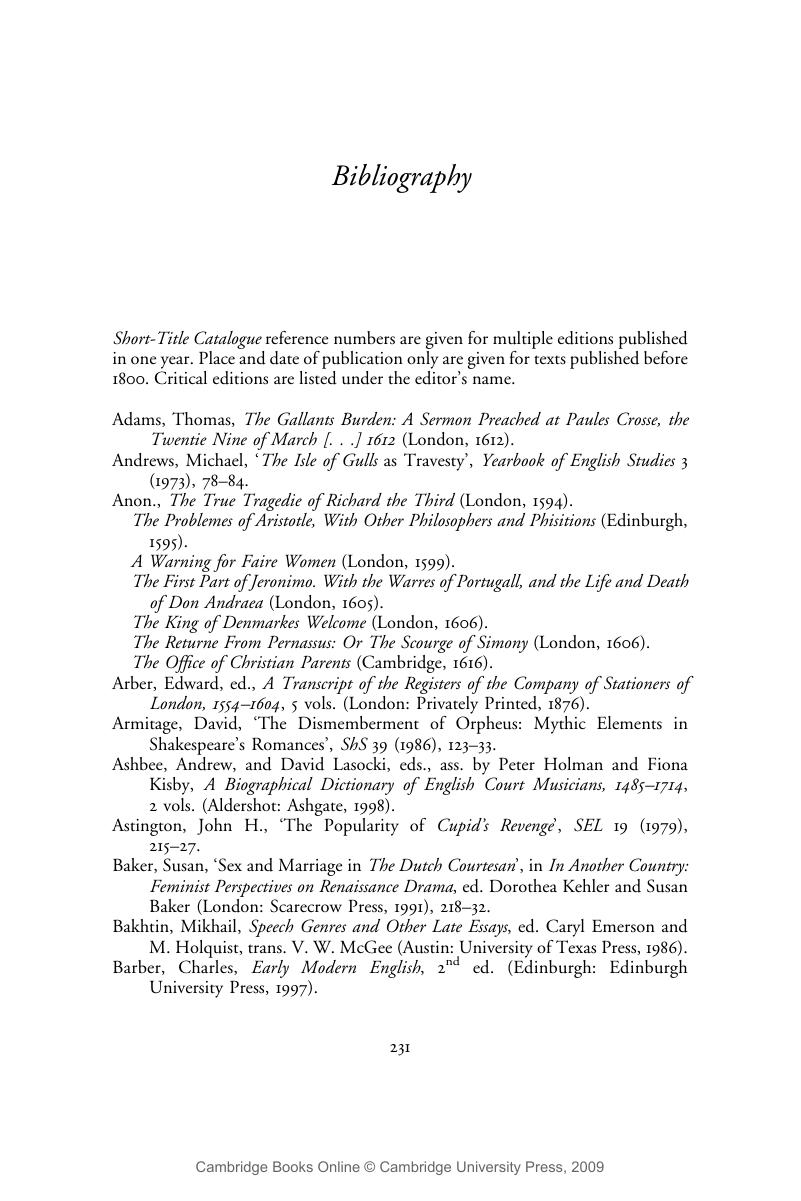Book contents
- Frontmatter
- Contents
- List of illustrations
- Preface
- List of abbreviations
- Introduction
- 1 Raiding the nest: a company biography
- 2 ‘Proper gallants wordes’: comedy and the theatre audience
- 3 ‘Grief, and joy, so suddenly commixt’: company politics and the development of tragicomedy
- 4 ‘Ieronimo in Decimo sexto’: tragedy and the text
- Conclusion
- Appendix A The Chapel/Queen's Revels repertory (Summary)
- Appendix B The Chapel/Queen's Revels repertory (Data and analysis)
- Appendix C Biographical summary
- Appendix D Actor lists
- Appendix E Court and touring performances, 1600–13
- Notes
- Bibliography
- Index
- References
Bibliography
Published online by Cambridge University Press: 22 September 2009
- Frontmatter
- Contents
- List of illustrations
- Preface
- List of abbreviations
- Introduction
- 1 Raiding the nest: a company biography
- 2 ‘Proper gallants wordes’: comedy and the theatre audience
- 3 ‘Grief, and joy, so suddenly commixt’: company politics and the development of tragicomedy
- 4 ‘Ieronimo in Decimo sexto’: tragedy and the text
- Conclusion
- Appendix A The Chapel/Queen's Revels repertory (Summary)
- Appendix B The Chapel/Queen's Revels repertory (Data and analysis)
- Appendix C Biographical summary
- Appendix D Actor lists
- Appendix E Court and touring performances, 1600–13
- Notes
- Bibliography
- Index
- References
Summary

- Type
- Chapter
- Information
- Children of the Queen's RevelsA Jacobean Theatre Repertory, pp. 231 - 252Publisher: Cambridge University PressPrint publication year: 2005



